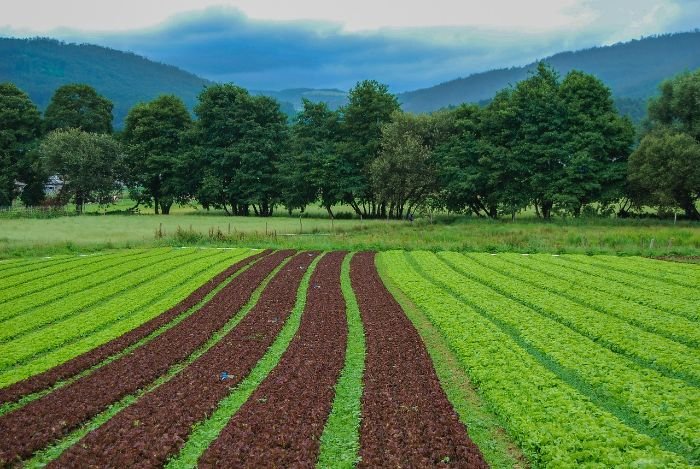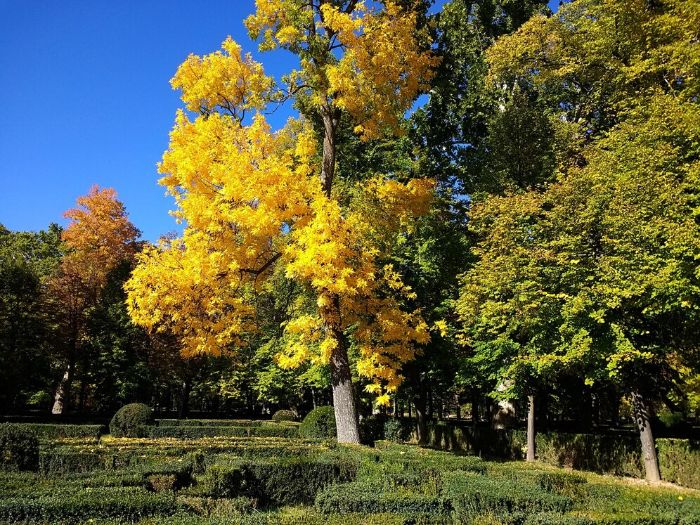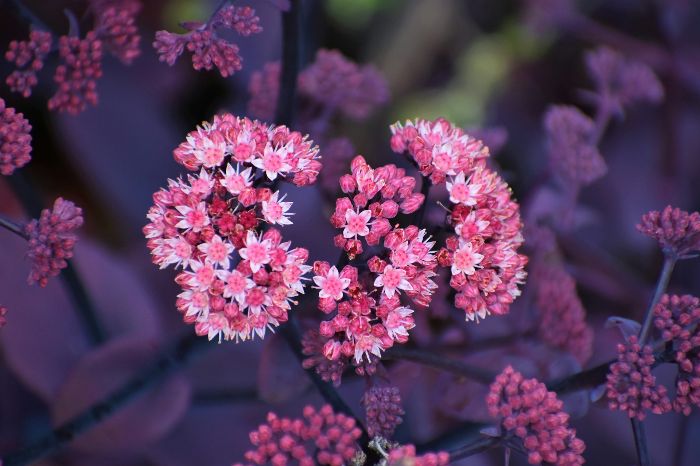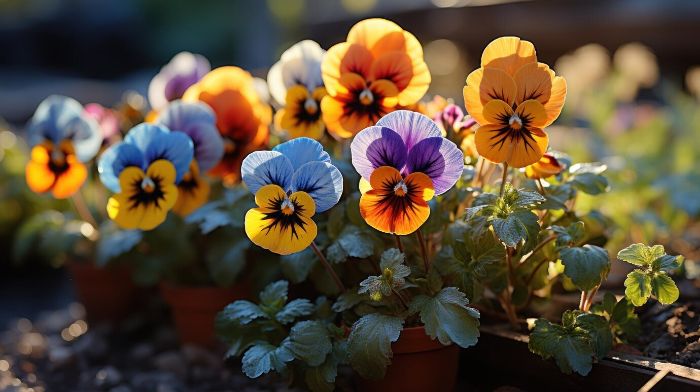Updated October 25, 2025
Soil types and properties show up in plain sight when beds flash a glassy sheen after watering, footprints hold overnight, or leaves sag by midday. Those signals tell you how roots will breathe and how long moisture will stick around.
Call the soil early and you avoid slow starts, drowned transplants, and wasted effort chasing the wrong fix. Expect a few quick field reads you can trust, not lab talk. If the surface looks slick, the trowel meets hard resistance, or water slips through like a sieve, you’ll know what you’re standing on and how to plan the week.
The payoff is simple – stronger take, fewer replant cycles, and a smoother path from first watering to harvest.
Key Takeaways:
- Spot texture from visible sheen, hand feel, and tool feedback.
- Use two fast checks to lock the call with confidence.
- Tune watering rhythm to how fast the surface lightens.
- Avoid the layering mistake that traps water at boundaries.
- Recheck beds on a weekly cadence during early growth.
Table of Contents
Spot Soil Texture Fast by Look, Feel, and Water Behavior
Mud that sticks to boots, grit that rasps on your palm, or water that lingers in shallow puddles all point to specific soil types and properties. Read the surface, touch a moist handful, and watch how water moves, and you can name a likely type before any test kit comes out.
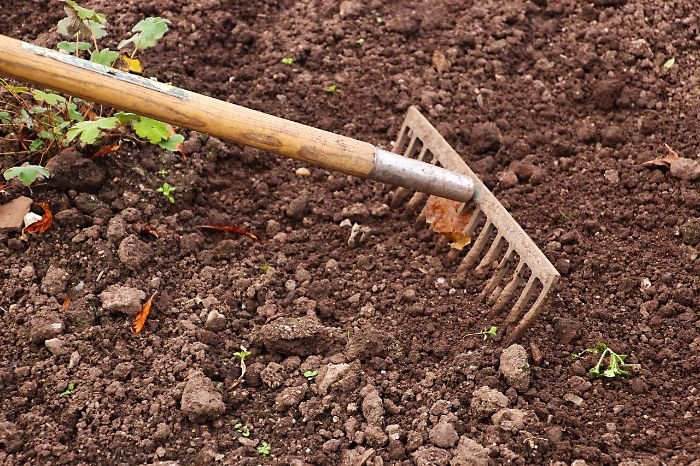
Hand feel and clumping
Start with a walnut-sized, slightly moist sample and press it in your palm. Grit across the fingers indicates sand, a slick smear indicates clay, a silky glide suggests silt. Loam feels crumbly with faint grit and holds together without smearing.
Roll the sample between the thumb and forefinger. If it forms a short ribbon before breaking, expect higher clay content. If it refuses to bind and falls apart immediately, sand dominates. A smooth ball that holds then fractures with a clean edge usually points toward loam.
Pro tip – Moisten a pinch and smear it thin between thumb and forefinger to separate grit from smooth silt before judging clay content.
Surface water response
Watch how a watering can’s flow behaves on bare soil. Fast soak-in with little sheen signals sandy dominance. A brief shine that fades within a few minutes fits loam. A persistent glossy film and slow absorption indicate clay influence. Recheck after light rain to confirm the pattern.
Crusting after the first dry day is a red flag for silt. A fragile, gray crust that cracks into plates after sun exposure often marks silt-rich beds. Clay can glaze but usually dries into harder, blocky patches rather than a thin crust.
Tool and footprint cues
Use the trowel as a gauge. If the blade slides in with little resistance yet walls collapse, sand leads. If the blade resists and walls stay glossy and firm, clay is likely. Loam cuts cleanly and the walls stay granular.
Footprints help after rain. Deep prints with sharp edges that hold shape point to clay. Shallow prints that round off at the edges fit loam. Prints that collapse or blur quickly suggest sand.
| Soil type | Hand feel | Water behavior | Tool or footprint cue | Typical pH tendency |
|---|---|---|---|---|
| Clay | Slick, sticky | Glossy film, slow to absorb | High resistance, sharp-edged prints hold | Neutral to slightly alkaline |
| Sandy | Gritty, non-binding | Rapid soak-in, no film | Low resistance, walls collapse | Slightly acidic to neutral |
| Silt | Silky, smooth | Brief film, surface crust forms later | Cuts soft, forms thin crust on top | Neutral |
| Loam | Crumbly with light grit | Quick intake with mild sheen | Cuts clean, walls granular | Neutral |
| Peaty | Spongy, light | Holds moisture, slow surface drying | Springy underfoot | Acidic |
| Chalky | Dry, powdery with fragments | Fast surface drying, runoff can appear | White flecks on cut face | Alkaline |
Short texture cues save time because pore size controls infiltration and resistance, so the same signals repeat reliably across beds with similar makeup.
A quick wrap-up – use touch, short-term water behavior, and simple tool feedback to get to a working soil ID on site. Confirm later with structured tests, but make your first field decisions with these cues.
Soil Characteristics In The Garden – Clay, Sand, Loam
Roots sit in waterlogged holes after rain or dry out between hose cycles because each texture moves water and air differently. Know how each one behaves and you can set irrigation rhythm and plant spacing with confidence.
Clay soil behavior
Clay holds water tightly because tiny pores slow movement and limit air exchange. Beds stay wet longer after a storm, and the surface can seal, which raises the risk of low oxygen around roots.
If a site keeps moisture more than 24-36 hours after a typical summer rain, expect clay dominance. Available water commonly runs around 1.8-2.5 inches per foot, so plants get a longer drink, but saturation comes first. Keep planting holes shallow and wide so roots can branch near the aerated zone rather than sink into a tight pocket.
Sandy soil behavior
Sand drains fast because large pores connect like wide pipes, so water leaves before nutrients can bind. The surface cools quickly at night and warms faster in spring, which shifts germination timing.
If a 6 inch test hole empties in under 30 minutes during a normal week, plan for sandy behavior. Available water often falls near 0.5-1.0 inches per foot, which means shorter intervals between watering and a lighter fertilizer touch delivered more often to reduce leaching.
Loam soil properties
Loam balances pore sizes, so air and moisture trade places without long delays. The structure resists compaction under hand work and recovers shape after cultivation.
Expect available water near 1.2-2.0 inches per foot with oxygen moving freely between cycles. That mix supports even rooting and a wider planting window, so transplants settle without stress and seeds emerge on schedule.
I often notice fine roots bunch near the top in tight clay while they thread deeper and more evenly in loam where air spaces stay open.
A quick takeaway for field use – clay holds and slows, sand sheds and cools, loam balances the two. Use those behaviors to plan watering intervals and root space before you bring in plants.
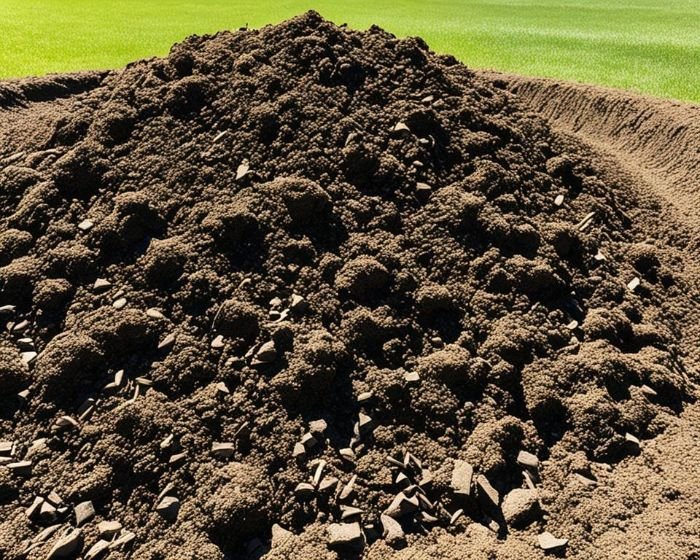
Less Common Types of Soil – Silt, Peaty, Chalky
A thin gray crust after irrigation, a springy dark bed that stays cool, or white flecks on the trowel cut all signal outlier soils that behave differently. Read the telltales early so planting doesn’t stall under a crust, in a cold sponge, or in high-pH grit.
Silt traits and risks
Silt feels smooth and packs tight, so the surface can seal after watering. The sealed skin limits air exchange and makes seedling emergence uneven.
If the top quarter inch darkens fast and then dries into a fine, plate-like film, expect silt dominance. A crust as thin as 1-2 mm can delay emergence by several days, so switch to low-impact watering and break the film lightly with a rake before seed sowing. The mechanism is simple – very small pores at the surface collapse under droplets, which slows infiltration and air movement.
Peaty traits and risks
Peaty soil looks dark and feels springy. It holds a lot of moisture and tends to read acidic, which slows nutrient availability and early growth.
Typical pH falls in the 4.5-6.0 range, and beds often warm more slowly in spring by a couple of degrees compared to mineral soils. Plan later sowing dates and avoid cool-loving transplants until the top few inches stay warm through the afternoon. The high fiber content retains water, therefore temperature and oxygen recover more slowly after rain.
Chalky traits and risks
Chalky or calcareous ground shows pale fragments and dries fast at the surface. High pH ties up phosphorus, so leaves can pale even when fertilizer has been applied.
Expect pH to run 7.5-8.3 with visible lime on the cut face of a trench or hole. Irrigation often leaves a whitish film on top by the next day. Phosphorus becomes less available as calcium carbonate rises, which explains slower early growth despite adequate watering.
Pro tip – Place a drop of household vinegar on a damp clod. A soft fizz points to free lime, which confirms a chalky profile.
- Silt forms a thin crust that blocks emergence and airflow.
- Peaty beds stay cool and wet, which delays early growth.
- Chalky soils run alkaline, which limits phosphorus availability.
Use these signals to flag special handling before you plan sowing dates or irrigation rhythm. Early identification saves replanting and shortens the path to even stands.
Simple At-Home Checks To Confirm Your Soil Type
A jar that settles into bands, a ribbon that breaks between your fingers, or a timed hole that refuses to drain will tell you more in one afternoon than a week of watching beds. Run these quick checks to confirm soil types and properties before you set planting plans.
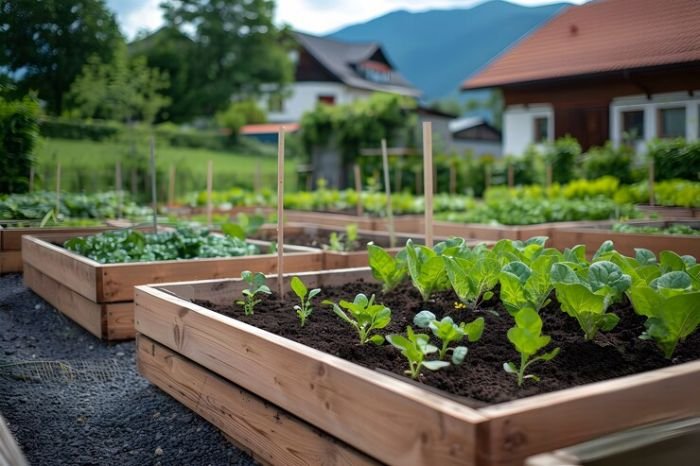
Squeeze and ribbon checks
Use a walnut-sized, slightly moist sample. Press it into a ball, then press outward between thumb and forefinger to form a short ribbon.
A ribbon that snaps around 0.5-1.0 inch signals moderate clay. A smear that won’t hold form points to sand. A ball that holds shape, then cracks cleanly when pressed, usually indicates a loam balance. The mechanism is simple: finer particles bind water and each other, so ribbon length increases as clay rises.
I often notice that samples taken an hour after light watering read more consistently than samples taken right after heavy irrigation.
Jar settle check
Fill a clear pint jar half full with soil, top with water, add a pinch of table salt, and shake for 60 seconds. Let it sit on a level shelf.
Sand settles within minutes, silt within a few hours, and clay forms a thin cap by 12-24 hours. Mark the layers with tape and measure their proportions. More sand means faster drainage and lower nutrient holding, while more clay means slower drainage with higher nutrient holding. Check two spots in the same bed to avoid a pocket skewing the read.
Drainage timing check
Dig a test hole about 8 inches deep and 6 inches wide. Fill it with water, let it soak in, then fill it again and time the drop.
A drop of 2 inches in 20-30 minutes fits sandy behavior. A drop of 2 inches in 60-90 minutes aligns with loam. If water lingers near the same level for more than 2 hours, expect clay influence or a compacted layer. Drainage speed tracks pore size and continuity, so the second fill gives the truer read after sidewalls saturate.
Dry lump fracture check
Pop out a dry clod and tap it with the back of a trowel.
Sharp, granular fracture suggests loam. A blocky break with shiny faces indicates clay. Grit that spills without defined faces points toward sand. This dry read pairs well with the jar check to confirm texture from a different angle.
| Test | How to do it | Visible result | Likely texture |
|---|---|---|---|
| Squeeze and ribbon | Form ball, press into short ribbon | Breaks at 0.5-1.0 inch | Moderate clay or loam |
| Jar settle | Shake soil in water, wait 12-24 hours | Layered bands by size | Proportion of sand, silt, clay |
| Drainage timing | Refill 8 inch hole, time drop | 2 inch drop rate | Sand fast, loam moderate, clay slow |
| Dry lump fracture | Tap a dry clod with trowel | Granular vs blocky vs gritty spill | Loam, clay, or sand cue |
Run at least two different checks on the same bed. Agreement between tests is what locks in the call, and that clarity makes planning easier.
Use Soil Characteristics To Plan Watering, Spacing, and Timing
Wilt at noon on a bright day, a cracked crust after a dry wind, or a bed that stays cool into late morning all change how you schedule water and set plant spacing. Read those signals and you can set a rhythm that matches how your soil actually behaves.
Drainage and watering rhythm
Watering intervals live or die by how fast the top layer dries and how long roots stay oxygenated. Fast dry-back demands shorter, more frequent sets so moisture stays in the root zone without flooding pores.
If the top half inch lightens within 6-10 hours and leaves flag late day, plan lighter irrigation every 1-2 days in warm weather. If color holds into the next morning and plants keep turgor, aim for 2-3 day intervals. Beds that stay dark for 36 hours often tolerate 3-5 day gaps. Shorter, split sets reduce runoff because pores refill between pulses, so water enters rather than skating off the surface.
Aeration and rooting depth
Roots follow oxygen and space. A shallow resistance layer limits rooting, so close spacing backfires even if nutrients are adequate.
Use a handheld probe to feel for resistance. If resistance shows near 4 inches, favor wider spacing and shallower planting so roots branch above the tight layer. If tools pass cleanly to 8 inches or more, tighter spacing is workable because roots can share volume without competing for air. Air-filled porosity drives root metabolism, therefore spacing should reflect how deep tools move before hitting a firm shelf.
Pro tip – Run the probe when soil is moist and cool in the morning. Readings are more consistent, and you avoid tearing structure that forms after a hot day.
Temperature swing and season timing
Warmth at planting depth sets the clock on germination and transplant recovery. Mineral sands warm faster under clear skies, while heavier mixes lag.
On many spring mornings, soil at 2 inches in sandy beds runs 2-4°F warmer than heavier ground by 9 am. Use that margin to sow earlier on fast-warming beds, then wait until morning readings hold 55°F or higher for warm-season crops in cooler soils. Cooler, slower-warming beds benefit from midmorning watering so the surface warms back up by noon rather than staying chilled.
- Time irrigation by dry-back – fast 6-10 hour lightening needs 1-2 day cycles, slow 24-36 hour hold allows 3-5 days.
- Set spacing by probe depth – shallow resistance near 4 inches means looser spacing, deeper than 8 inches allows tighter rows.
- Check morning soil temperature at 2 inches – 55°F is a practical go signal for warm-season transplants.
Plan schedules around how the bed behaves on your site, not a calendar. When intervals, spacing, and timing match local cues, plants settle faster and hold performance through swings in heat and rain.
Practical Wrap-Up
Treat soil like a system you audit, not a label you assign once. Classify with two different checks on the same day, then re-verify after conditions change. Re-test beds at three points each year – early spring, mid-summer after 7-10 dry days, and late fall after rain – because moisture patterns and surface structure shift with use.
Use decision rules that tie observation to action. If a test hole drops 2 inches in under 30 minutes, shorten irrigation intervals and favor morning sets. If footprints hold sharp edges the next day, widen plant spacing and avoid heavy traffic until the surface relaxes. When jar layers or ribbon length sit on the fence, default to field behavior – dry-back time and infiltration speed decide how you schedule work.
Start small and iterate. Map one representative spot per 100-150 square feet, run the two quickest checks, and set a 2-week trial schedule for watering and spacing. Keep notes on dry-back hours and root depth at pull-up. That loop builds a local read of soil types and properties that travels with you to every new bed.
- Adjust schedules after a 2-week trial
- Run two different texture checks per bed
- Re-test spring, mid-summer, and late fall
- Time dry-back in hours after irrigation
- Probe depth before setting row spacing
FAQ
How do you classify soil types at home without a lab and get reliable results?
Run two different checks on the same moist sample, then confirm in a second spot 10-15 feet away. A ribbon check plus a jar settle read taken within 24 hours gives a dependable call because each test measures a different property of soil texture.
What are the most common mistakes when identifying soil texture and how do you avoid them?
Testing when soil is saturated smears clay into everything and testing bone-dry samples makes sand dominate. Re-wet to field-moist, crumble by hand first, and compare two samples from the same bed so compaction or a pocket of fines does not skew the read.
Can you mix different soil types in one bed without creating drainage problems?
Yes, but avoid layering. Blend thoroughly through the top 9-12 inches so pore sizes transition gradually, otherwise water can perch on the boundary between contrasting textures and roots stall above the seam.
What happens if I plant as if the soil were loam but it turns out to be clay?
Expect longer wet periods and slower re-oxygenation, so seedlings may sit pale and growth may lag. Switch to shorter irrigation sets with longer gaps and give roots wider spacing to keep them in the more aerated zone.
How often should I re-check my yard’s soil classification?
Re-check at three points each year and after any major regrading or heavy traffic. Texture class rarely changes, but structure and surface behavior shift with seasons and use, so timing and spacing decisions stay aligned.
Does delivered topsoil usually match my site’s soil characteristics?
Loads vary by pit and batch. Test a scoop from the truck with a quick jar read and a dry lump fracture before spreading so you don’t commit a yard to an unexpected texture.
Can potting mix readings predict in-ground soil behavior?
No. Potting mixes are engineered to drain and aerate under container conditions, so their water movement and temperature swing differ from mineral ground; treat potting tests as container-only data.
Is there a quick way to map types of soil across a yard without testing every bed?
Sample a simple grid at 20-25 foot intervals, then add one extra sample anywhere runoff collects or foot traffic is heavy. If two neighboring points differ by more than one texture class, add a midpoint to find the boundary.






